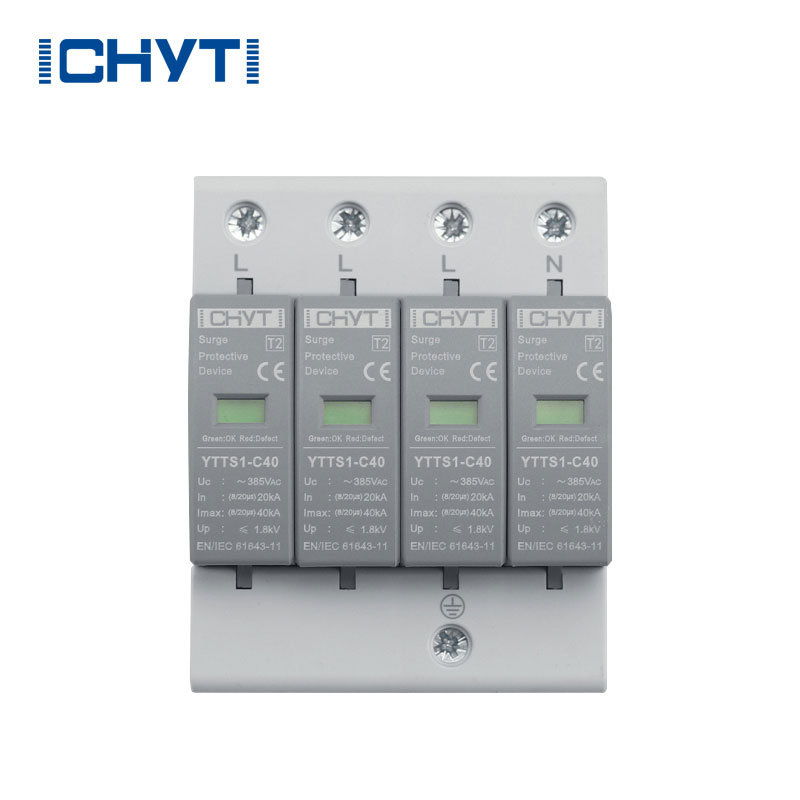Navigating the Surge Protection Landscape: Unraveling the Design and Functionality of 4-Pole AC SPDs
2024-01-08
Introduction:
In the dynamic world of surge protection devices (SPDs), where resilience is paramount, the 4-pole AC SPD emerges as a distinctive player. Understanding how this device differs from its counterparts in terms of design and functionality is crucial for those entrusted with safeguarding electrical systems. This blog aims to unravel the intricacies of 4-pole AC SPDs, shedding light on what sets them apart in the realm of surge protection.
1. Defining the Landscape:
Before we delve into the specifics, let's grasp the diverse range of SPDs available. These devices come in various forms, including single-pole, two-pole, and three-pole configurations, each tailored for specific applications. The 4-pole AC SPD, however, stands out for its unique design catering to comprehensive surge protection.
2. The Essence of Poles:
In the context of SPDs, a "pole" refers to a set of conductive elements within the device. The number of poles corresponds to the number of conductive paths available for surge current to flow through. In contrast to its counterparts, the 4-pole AC SPD boasts four such conductive paths, each serving a distinct role in its overall functionality.
3. Comprehensive Phase Protection:
One of the defining features of the 4-pole AC SPD is its ability to protect all phases in an alternating current (AC) power supply. This includes line-to-line and line-to-neutral protection, making it well-suited for three-phase electrical systems commonly found in industrial and commercial settings.
4. Versatility in Applications:
While other SPDs may excel in specific applications, the versatility of the 4-pole AC SPD makes it a go-to choice for a wide range of scenarios. Whether installed in critical infrastructure, industrial plants, or commercial buildings, its capacity for comprehensive protection makes it adaptable to diverse electrical environments.
5. Harmonious Integration with Three-Phase Systems:
The design of the 4-pole AC SPD aligns seamlessly with the intricacies of three-phase electrical systems. By addressing the surge protection needs of each phase, it ensures a harmonious and balanced defense against transient overvoltages, minimizing the risk of damage to connected equipment.
6. Coordination in Surge Protection Strategy:
In a well-designed surge protection strategy, coordination between SPDs is paramount. The 4-pole AC SPD integrates seamlessly into such a strategy, complementing the protective measures of other devices and ensuring a coordinated response to surge events.
7. Compliance with Standards:
Adherence to industry standards is a hallmark of reliability in surge protection. The design and functionality of the 4-pole AC SPD are engineered to meet or exceed these standards, providing users with confidence in the device's performance and safety.
8. A Glimpse into the Internal Components:
To appreciate the functionality of a 4-pole AC SPD, one must explore its internal components. These may include metal oxide varistors (MOVs), gas discharge tubes, and other elements that work in tandem to divert and absorb surge currents.
Conclusion:
As the demand for robust surge protection continues to grow, the 4-pole AC SPD emerges as a stalwart defender against transient overvoltages. Its unique design, characterized by the inclusion of four poles, sets it apart in terms of functionality and versatility. Understanding these distinctions is key for those navigating the surge protection landscape, ensuring that the electrical systems under their care remain resilient in the face of unpredictable electrical events.



